This thin crust gluten free pizza dough recipe, made with individual flours, is easier than you think. The key is to be set up to make recipes with individual flours using weight measurements. Of course there are a few more tips but you can eat and learn at the same time.
I regularly make two different gluten free pizza dough recipes. This one and a thicker New York-style pizza dough. I have favourite toppings for each one and I recommend you make them both for a head-to-head comparison. That's what we do in my virtual pizza cooking class.
Jump to:
Gluten Free Pizza Dough: Frozen, Precooked or Homemade Dough
When you’re new to gluten free you’ll find all the frozen pizza in a box as well as precooked pizza shells. Much like learning about gluten free bread you simply need to try them all and see what you think.
The reviews are mixed. Some people are happy with the choices available and some can live without pizza. Then there cooks who want to master homemade pizza. Those are my people!
🍕 Ingredients for Califonia-style Thin Crust Pizza
I’m always recipe testing so I’m organized to mix any combination of flours. A small amount of effort up front will pay off for years.
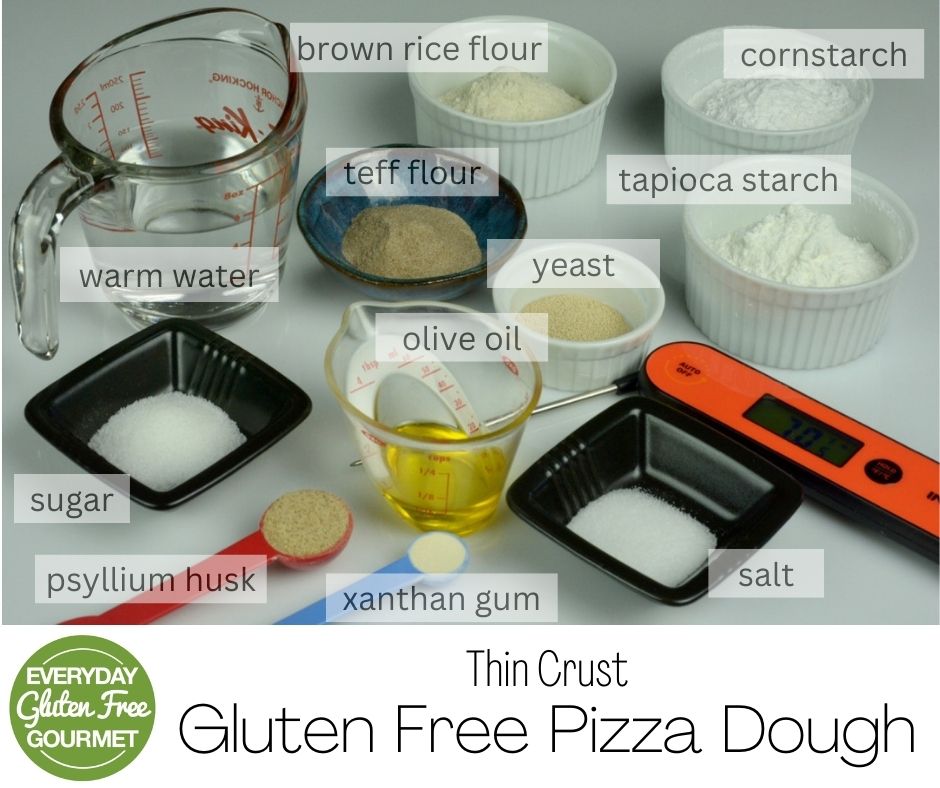
- active dry yeast
- olive oil
- brown rice flour
- cornstarch
- tapioca starch
- teff flour
- psyllium husks
- xanthan gum
- pizza sauce, cheese and toppings of your choice
See recipe card for exact amounts.
Gluten Free Flour for Pizza
When I bought the cookbook, No Gluten, No Problem Pizza, I learned more about pizza than I ever knew. In their beautiful book Kelli and Peter Bronski share 19 different recipes for pizza dough. That was news to me, 19 different kinds of dough. (How did I not know that?)
Let's talk about gluten free flour. Finding a gluten free flour blend that works for ‘most’ of your baking is a game changer. I use my EGFG flour blend for about 80% of my baking. My hope for you is that it doesn't take you as long to figure that out as it took for me.
All purpose blends do not work for yeast breads. For dinner rolls, bagels, all kinds of yeast breads and pizza dough, a different combination of flours gives the best result. There are bread flour or pizza flour blends so try them if that's works better for you.
There's no right or wrong way to cook gluten free. I'm set up to store and use many separate flours because I like to make every kind of recipe. Most of my pizza dough recipes use a combination of four or five flours and starches. If you're up for that then get set up and let's make pizza!
Instructions for Gluten Free Pizza
Gluten free baking often looks different than what you might expect. Here you can see that after the dry and wet ingredients are stirred together it looks very much like a batter.
As the gluten free flours and starches absorb the liquid more fully it will begin to look like dough. Be patient and trust the process.
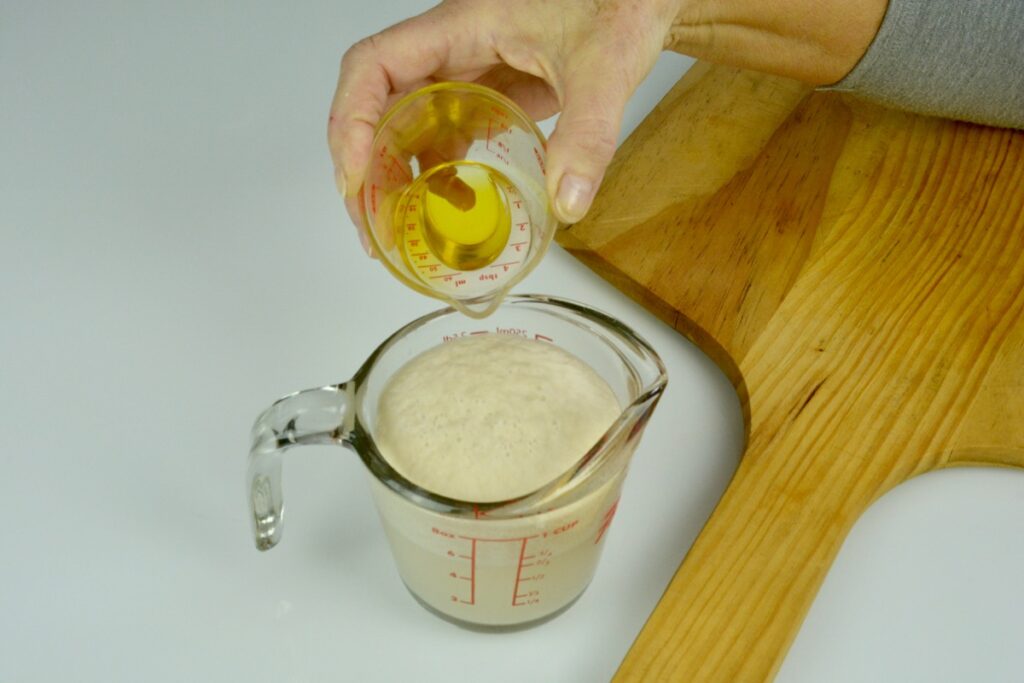
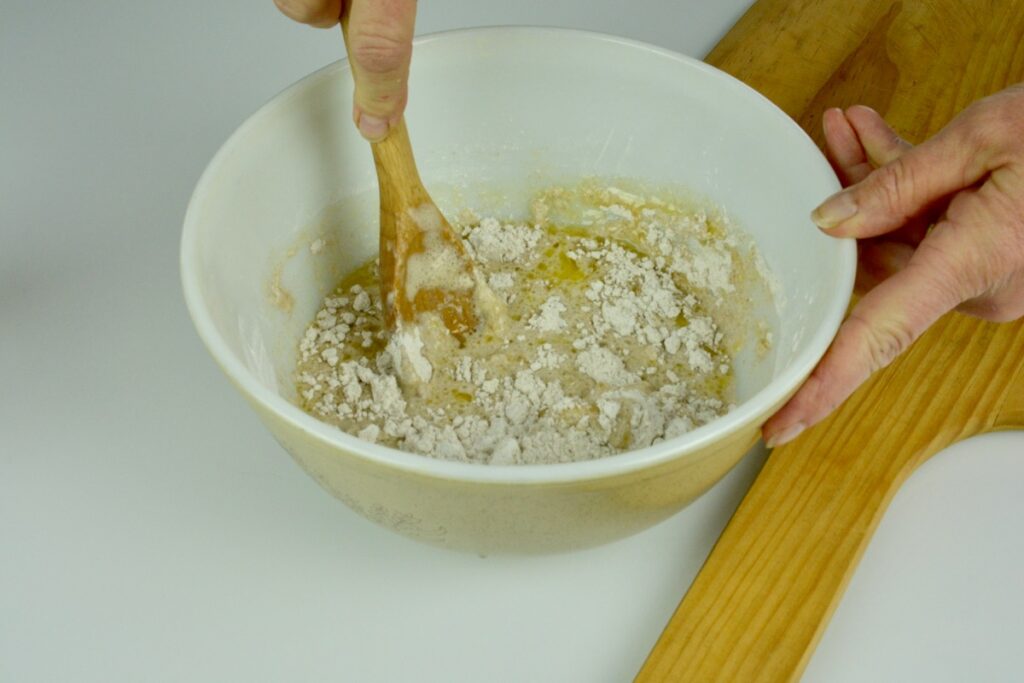
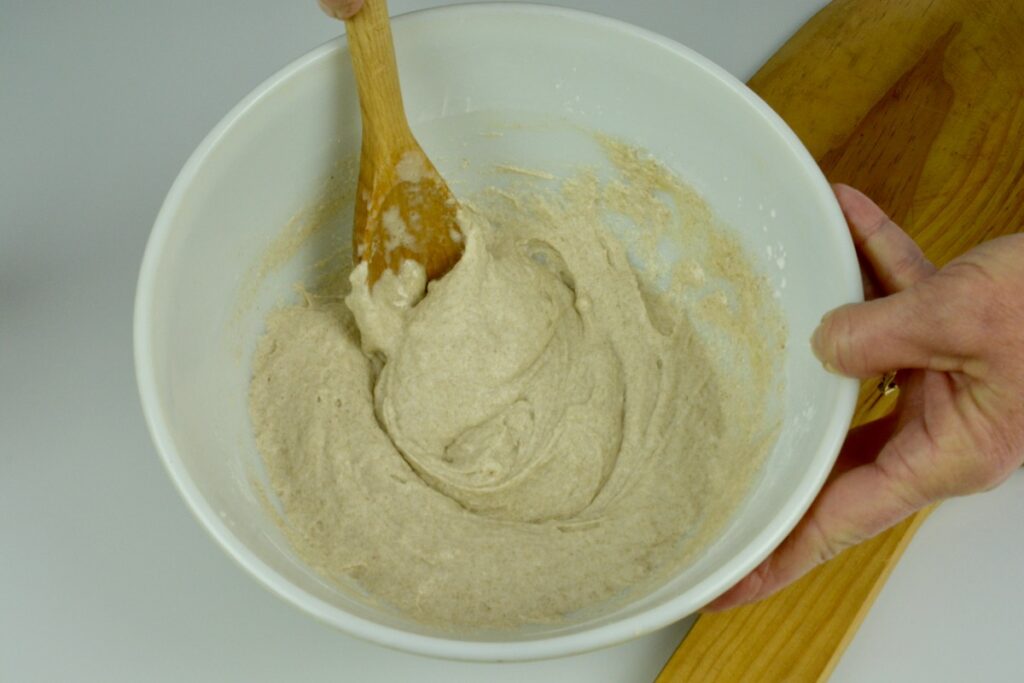
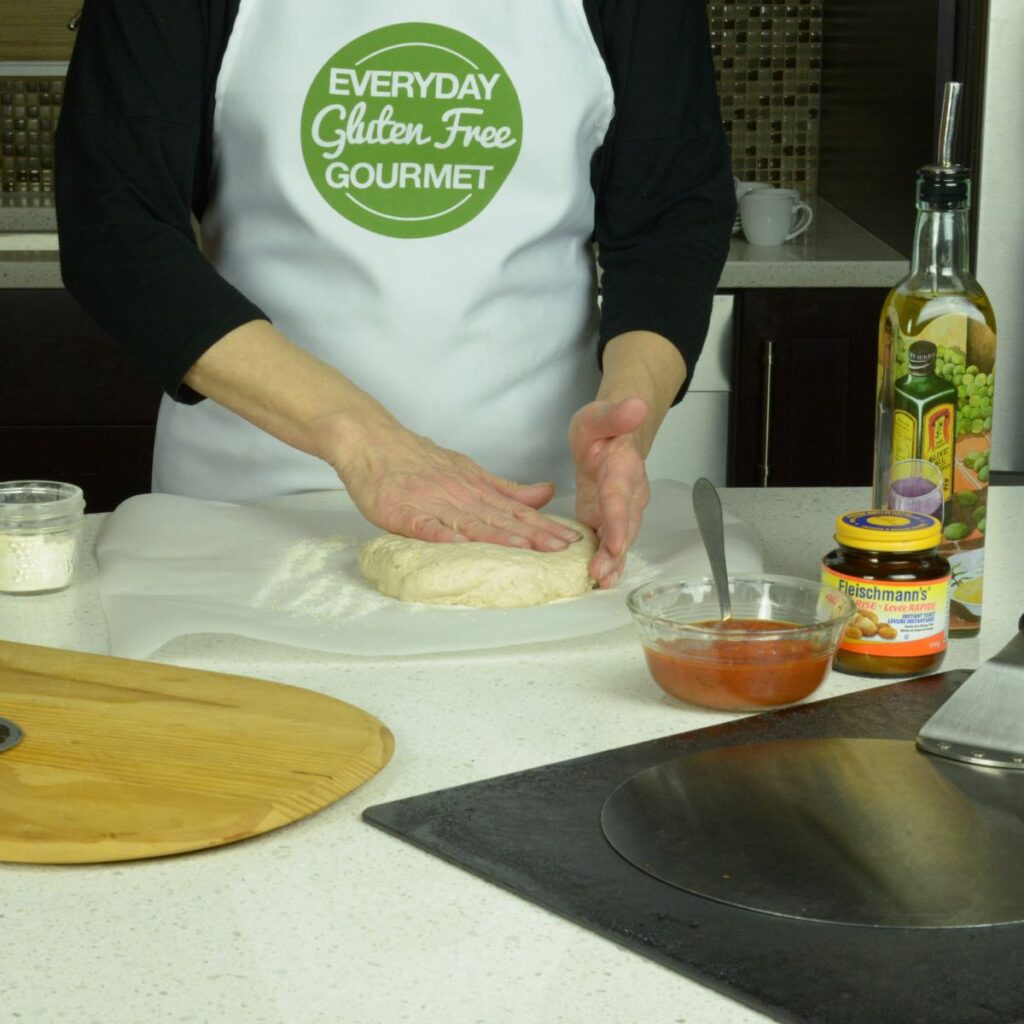
I've made this recipe many times and in as little as five minutes I can scrape it out onto the counter and start pressing the dough. It takes patience and time so don't give up. I find that if I stop pressing for a few minutes and go organize other ingredients I don't make holes from forcing it.
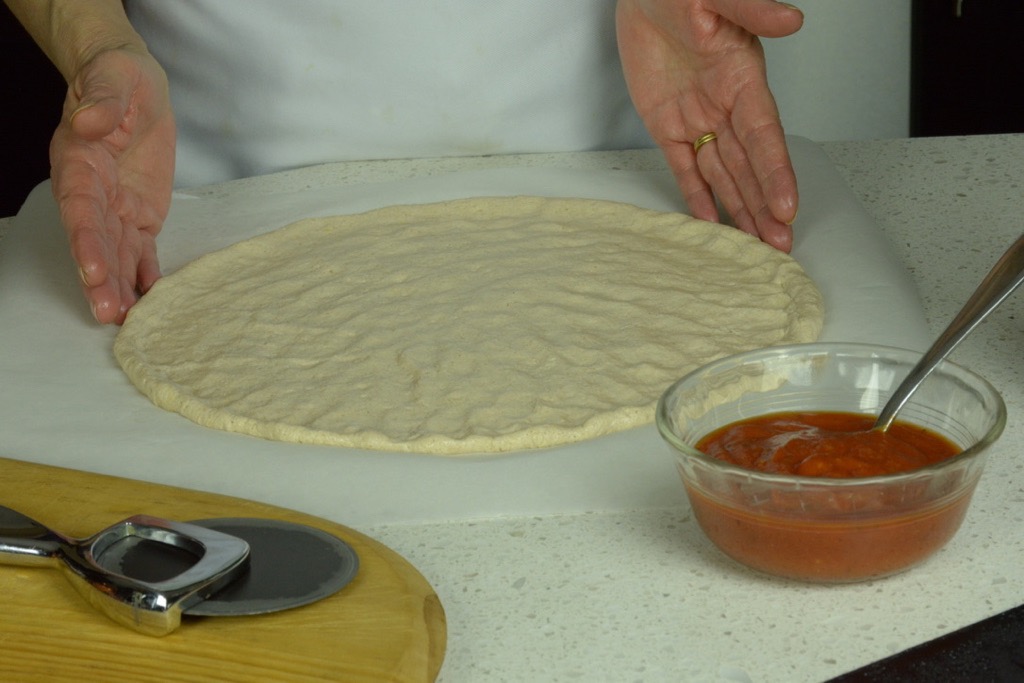
Best Equipment for Gluten Free Pizza
Kitchen equipment is an investment you make over time. You don't need top of the line equipment but you can't make great pizza in cheap pans with the oven at 450°F.
Baking Steel (pizza steel)
A steel conducts heat better than a baking stone and is the secret to getting closer to that perfect gluten free pizza crust you dream of. They come in varying thicknesses and can be too heavy for some of us to lift so buy one that you will be able to move.
- Basic 14-inch square pizza steel.
- Darebuilt 14 x 22-inch wide (measure your oven before you buy).
- This Fire & Slice steel pizza stone is 14 x 16-inches and available in three thicknesses. The ½-inch steel weighs 32 pounds!
Baking Stone (Pizza Stone)
If you already have a pizza stone then you know it's more effective than cooking on a regular baking pan. Baking stones do break (I've been through a few of them) so when it’s time to upgrade look for a baking steel.
Pizza Peel
A pizza peel helps you move your pizza in and out of the oven so chose one at least 12-inches across. If you want the super long handle pizza peel like you see on TV, and you've got a broom closet to store it, then I think you should buy one!
- Wooden or metal short-handled pizza peel.
- Large 37-inch detachable handle would be a fun gift!
Pizza Gift Basket Ideas
Whether you’re building a gift basket or getting your kitchen decked out to take your pizza to the next level, here are more items you may want.
- Parchment paper is used to transfer the raw dough to the hot pizza steel.
- Cut your pizza with a small pizza wheel or a fancy mezzaluna chopper or Epicurean pizza rocker.
- The cookbook No Gluten, No Problem Pizza. It is a fabulous gift for yourself or anyone who wants to make every kind of pizza they can.
Top Tip for Gluten Free Pizza
Measure your oven before you buy a pizza steel. My steel is made by Vermont Castings, measures 14 x 18-inches and even though it is only ⅛-inch thick it takes two hands to lift it. Thicker is better but you have to be able to store it and move it.

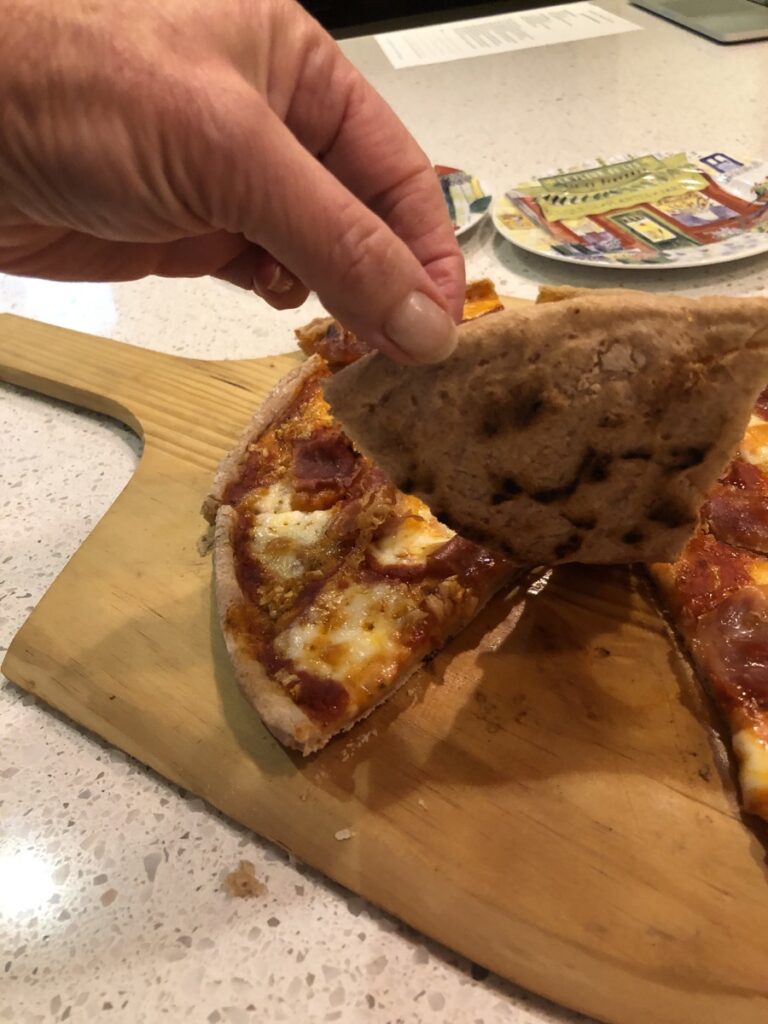
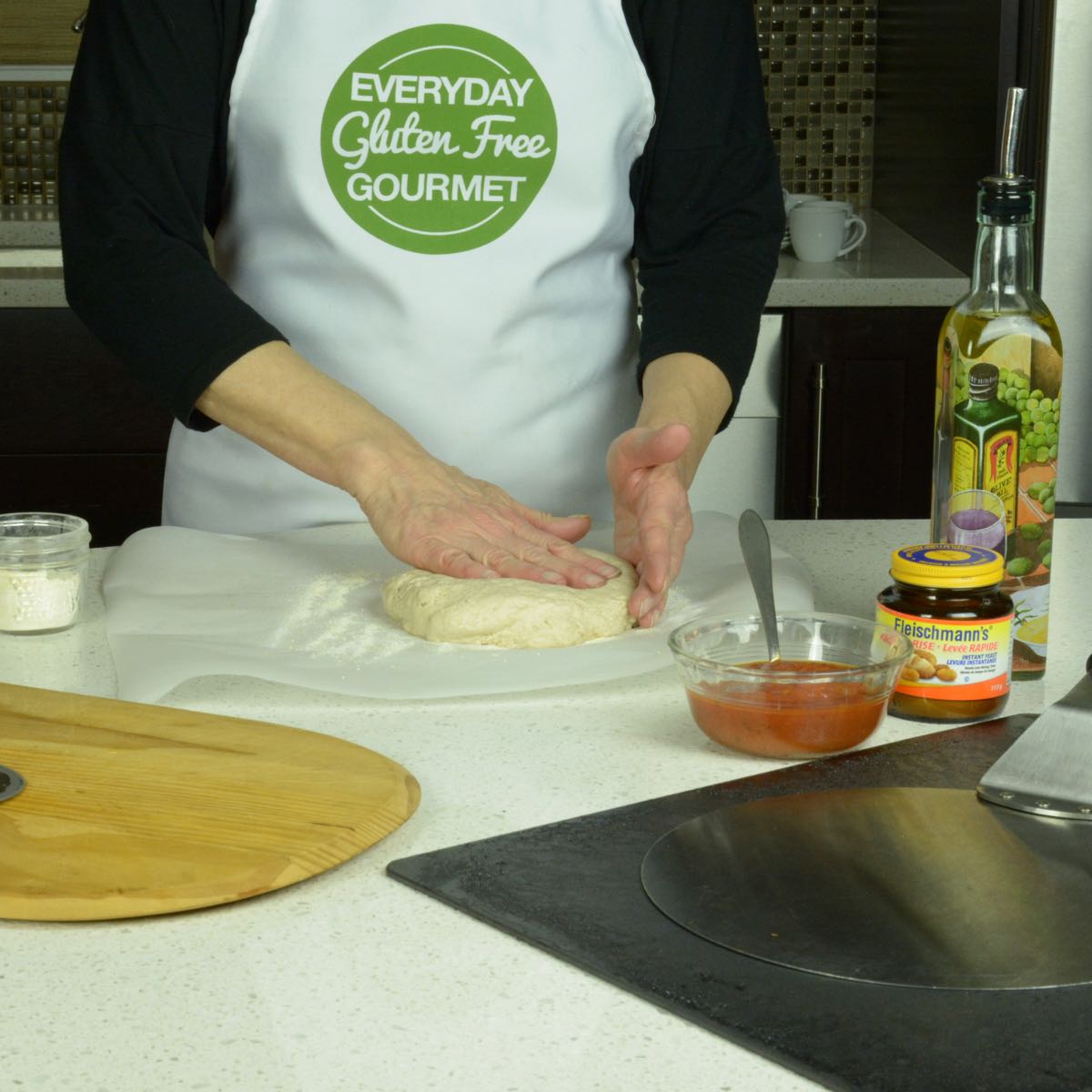
Gluten Free Pizza Dough (Thin Crust)
Equipment
Ingredients
PROOF YEAST
- 157 grams warm water (110-115°F)
- 1½ teaspoon sugar
- 1 teaspoon active dry yeast
- 1 tablespoon olive oil
DRY INGREDIENTS
- 50 grams brown rice flour
- 50 grams cornstarch
- 50 grams tapioca starch
- 12 grams teff flour
- 1 teaspoon psyllium husks see note
- ¾ teaspoon salt
- ¼ teaspoon xanthan gum
SPRINKLING FLOUR
- ½ cup sweet rice flour
- ½ cup cornmeal
TOPPINGS of your choice
Instructions
Proof Yeast / Make Dough
- Run tap water until very hot. In a 2-cup measuring cup weigh water and check the temperature, 110-115°F.
- Add sugar and yeast. Stir and let activate for 5-10 minutes until foamy.
- Add 1 tablespoon olive oil to yeast mixture then pour into dry ingredients.
- Stir vigorously until dough is smooth and has no lumps. It will look more like a batter. Let rest 10 minutes for the flour to hydrate and become a workable dough.
Shape Dough
- Place large sheet of parchment, about 15-inches square. Sprinkle with 1 tablespoon bench flour and turn dough onto parchment.
- With lightly oiled hands gently press dough into an 8-inch circle. Let rest for a 5-10 minutes then come back to finish shaping.
- TIP: Lightly brush a second piece of parchment paper with oil. Lay it on top of the dough and gently press and push from the center to the edges. (Like petting a dog.) Repeat around the whole circle, gently removing the paper after several strokes to ensure it is not sticking. Be patient and keep pressing until the dough 10 to 12-inches round.
- Spread pizza sauce evenly over dough leaving edge without sauce. Top as desired (see suggestion below).
- Slide pizza peel under parchment and transfer to preheated oven with pizza steel.
- Bake in oven for 2-3 minutes. Use pizza peel to lift crust from parchment and remove paper. Continue cooking 5-6 minutes until bottom of crust is brown and cheese is bubbly.
- Let cool, top with arugula if using, take pictures and videos, admire your creation. Slice and serve hot.
Notes
Nutrition
__________________________________________________________________________
New here? I've got the help you need to learn to make gluten free food the whole family wants to eat. Subscribe and get your free resource, 29 Tips for GF flour.
🎉 I made it into the Top 100 Gluten Free Blogs for 2025 and the Top 40 Gourmet Food Blogs. Learn all the ways I can help you by visiting this page, Everyday Gluten Free Gourmet.
_________________________________________________________________________



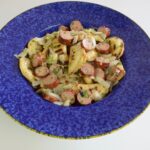

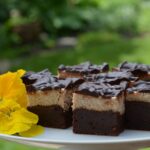

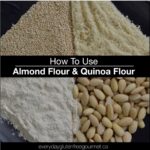
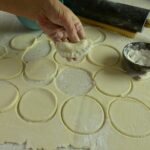
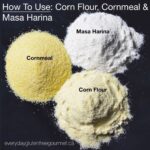




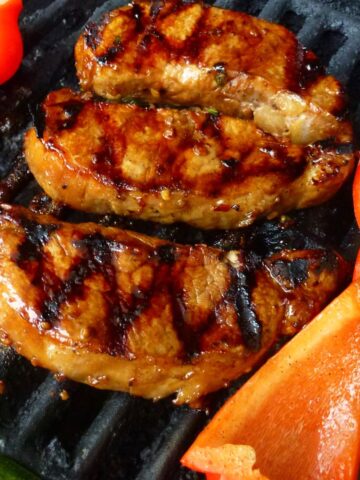
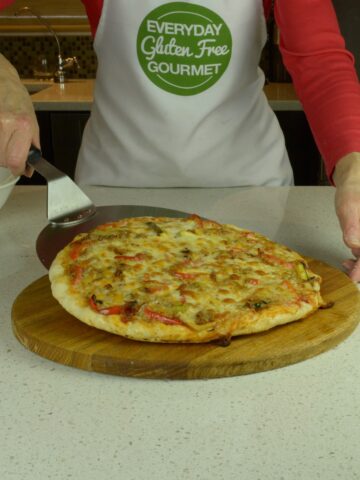
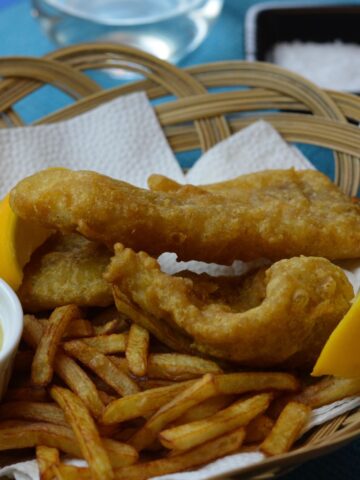
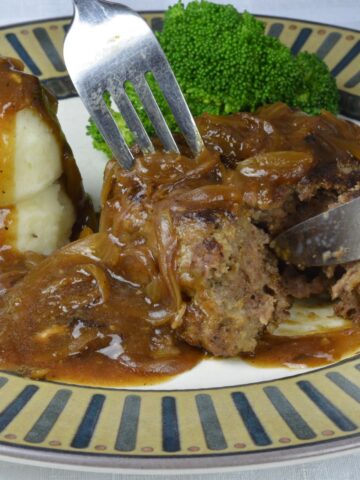

Eileen
Here I’m adding a comment and question as per your request in your subscription email. I can’t eat brown rice. How easy is it substitute white rice for brown rice in your recipes? Or is there a better flour? Yes, I’m referring to this specific pizza recipe as well.
I’m looking forward to checking out your website because you have a different approach when it comes to flour blends. I’m need to find flours that do not have brown rice or almond flour in them.
Thanks!
Cinde Little
Hi Eileen. Everyone has different foods to avoid so there is a learning curve for sure. To replace brown rice flour in this specific recipe I might try millet flour, quinoa flour or white rice flour; in no particular order. There is more trial and error with yeast bread recipes so I'd make two doughs some night and try two of those options. Keep good notes and work from there. As long as you can eat everything you make you're winning! As for other recipes I would say white rice flour is a good substitute for brown rice flour (except in cookie recipes). If you subscribe to my email list you'll get all my best flour resources sent to you over 10 days. You can also enter the word 'flour' into the SEARCH bar on the website and then scroll through the posts to find helpful resources. Another term to SEARCH is 'Rice Free Baking' to see other recipes made without rice flour. Best of luck and feel free to keep asking questions as you learn.
Linda
TRUST THE RECIPE!!!
The FIRST time I made this dough, even though I use a scale, I thought I really messed up measuring the ingredients. The dough (VERY batter like) was VERY wet, it bubbled as it was supposed to but was almost impossible to handle. I decided to fully bake it untopped and top the fully cooked dough. I was pleasantly surprised how good the cooked pizza crust tasted, but still thought I’d messed up the measuring. (It was delicious topped with FODMAP friendly basil pesto and a little flaky salt.)
The SECOND time I decided to TRUST THE RECIPE. I put the tomato sauce etc. on the VERY wet dough and followed the directions. After letting the cooked pizza sit for a few minutes I enjoyed a real pizza that didn’t taste gluten free.
Another winner Cinde - Thank you!!
Cinde Little
Wow Linda, what a great overview of gluten free learning. Gluten free batters and doughs are not the same and this dough takes time to absorb the liquid and fat. I'm glad you persisted and it worked in the end. Now you've got a reliable pizza dough recipe to enjoy. I've learned to organize myself a bit differently to cook gluten free. Get the dough made first, then start organizing the toppings and the rest of the meal.
Andrew
This pizza dough was amazing! Great texture and decent flavour. Best gluten-free crust I have made. Our oven only goes to 500F which was fine. Before putting on toppings I baked the crust for 3min, removed the parchment, flipped the crust over to have the smooth side up, then added toppings and baked some more.
Cinde Little
Andrew, that's awesome! I'm happy to hear you made it work in your oven with a pre-bake step then flipping it over. Excellent! I hope you make many more pizzas.
Paul Baker
I would NEVER USE hot tap water!!! Water from a water heater contains contaminants such as heavy metals, concentrated chlorine, and concentrated fluoride.It is NOT DESIGNED FOR INTERNAL USE!!! This can be deadly! Just heat water in a pot or kettle, You could also buy an instant hot water tap, that is plumbed in next to your sink.
Cinde Little
Hey Paul, I can see you feel strongly about that. Many bread bakers recommend using filtered water for bread making. I have a plumbed in filtered water line in my kitchen and use that water for drinking and cooking. I prefer not to use water out of a plastic bottles. Over here on my website my focus is to help people learn to cook gluten free and avoid the unhealthy processed food that is so readily available. I also want them to learn to have fun in the kitchen. Everything else about the food industry, food manufacturing and health etc is an individual, life long journey and it's full of challenges for people on a gluten free diet. So thanks for your comment, some people may read and appreciate your perspective.
Alene
Hi! Hope you are having nice day. Which flour can take the rice's place? Sorghum?
Cinde Little
Hi Alene, I hope you had a nice day too! Sounds like you're getting used to substituting for rice flour. Compared to other pizza dough recipes I've made I think I'd try corn flour, sorghum flour or oat flour. Let me know how it turns out.